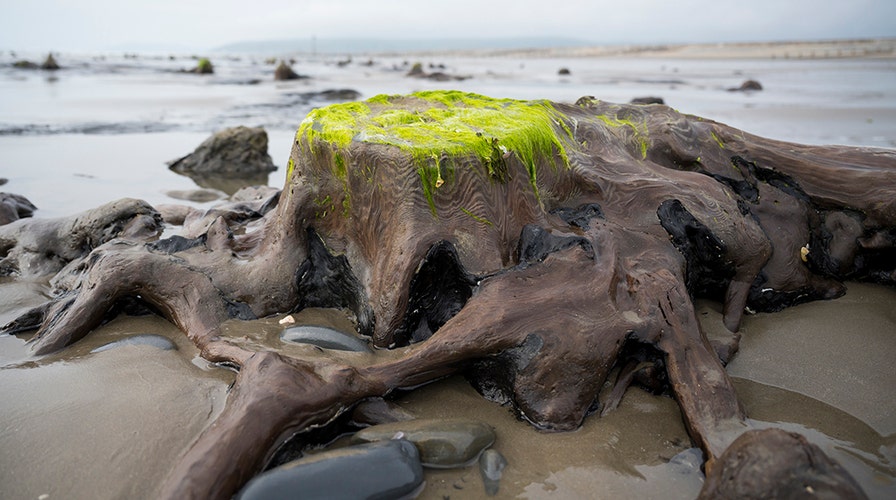Fox News Flash top headlines for May 28
Fox News Flash top headlines for May 28 are here. Check out what's clicking on Foxnews.com
A mysterious prehistoric forest has risen again on a Welsh beach thanks to Storm Hannah.
The collection of ancient tree stumps had been buried under water and sand more than 4,500 years ago and now people are connecting it to an ancient legend about a 'sunken civilization'.
The forest is being associated with a 17th Century myth called 'Cantre'r Gwaelod', or the 'Sunken Hundred'.
It is thought that the trees belonged to the ancient forest of Borth, which once stretched for two to three miles along the shore between Ynys-las and Borth in Wales.
This area is believed to have been a town surrounded by fertile land for farming and protected by floodgates.
An ancient legend dictates that the land was drowned when a priestess called Mererid neglected her duties at the fairy well she was in charge of and allowed it to overflow.
This petrified forest has been partially uncovered before but never to this extent.

BORTH, WALES - MAY 24: A general view of petrified ancient trees on May 24, 2019 in Borth, Wales. A prehistoric forest which was buried under water and sand more than 4,500 years ago has been uncovered on the beach between Ynys-las and Borth in mid-Wales. The forest has become associated with the myth of a sunken civilization, known as Cantrer Gwaelod, or or the Sunken Hundred, and devotees believe the area was a once-fertile land and township stretching for 20 miles. The remains of the forest's trees, preserved in the local peat, have been exposed by low tides and high winds from the recent Storm Hannah. (Photo by Matthew Horwood/Getty Images)
The area is often referred to as the Atlantis of Wales and various archaeological discoveries have been made here including fossilized human and animal footprints.
Some locals say that they can still hear the bells of the drowned church of Cantre’r Gwaelod on a quiet day.
High-speed winds from Storm Hannah managed to unearth the prehistoric tree roots that had been preserved under a deep layer of peat and sand.
This is the first time some of these trees would have been seen for thousands of years.
This story originally appeared in The Sun.
